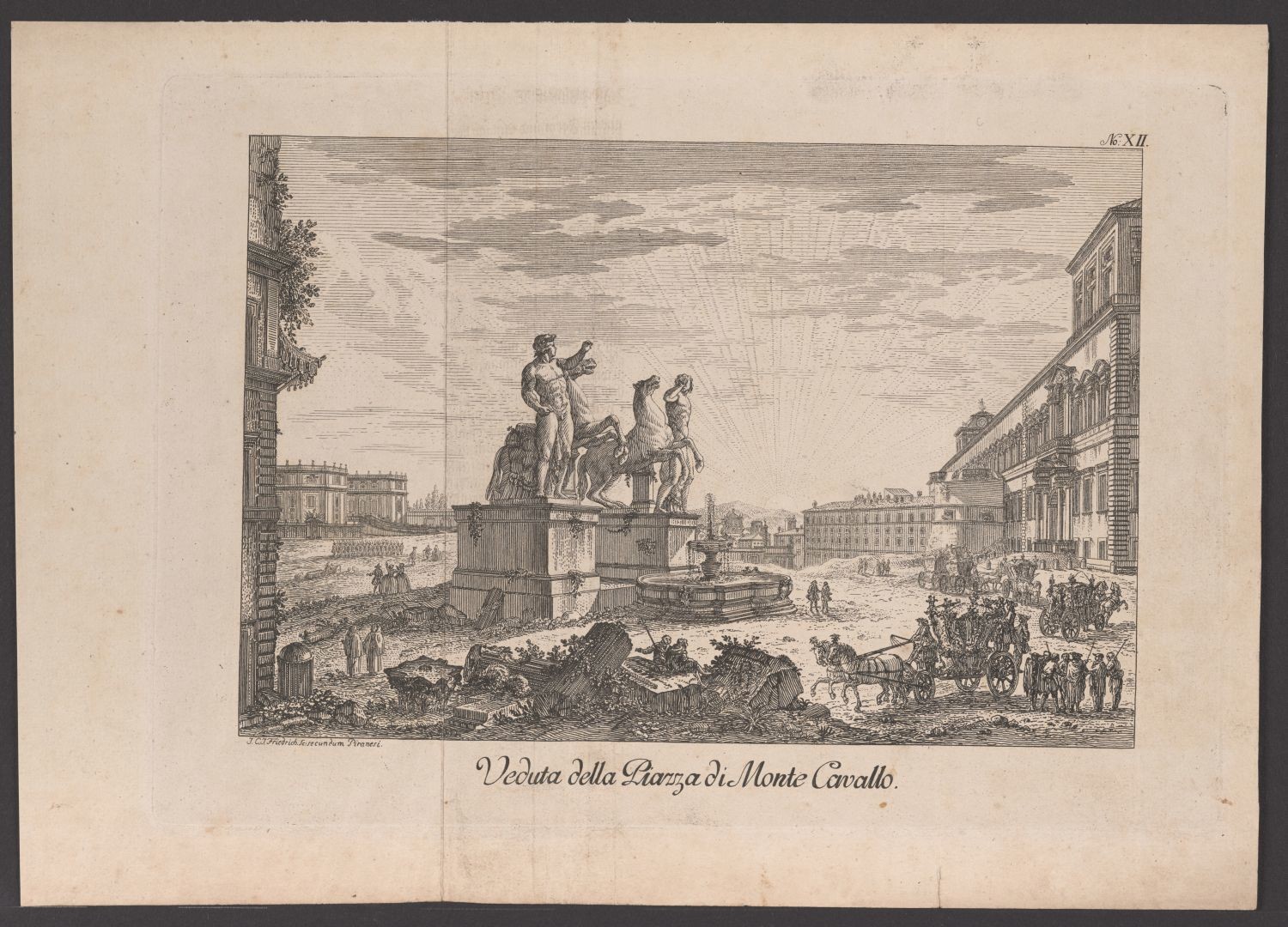Dies ist eine Ansicht auf den Dioskurenbrunnen vom Piazza del Quirinale. Er steht vor dem Quirinalspalast, der hier rechts am Rand angedeutet wird. Der Brunnen wird von Statuen der Dioskuren Castor und Pollux mit ihren Pferden flankiert. Es fehlt der Obelisk zwischen den Statuen. Er wurde 1786 dort installiert.
Der Stich entstand nach einer Vorlage von Giovanni Battista Piranesi (1720-1778). Gestochen wurde er von dem in Dresden tätigen Kupferstecher Jacob Friedrich (1746-1813). Das Blatt ist Teil einer Sammlung von Radierungen von Friedrich und trägt die Nummer 12.
Signatur: J. C. J. Friedrich sc: secundum Piranesi. No. XII.
Beschriftung: Veduta della Piazza di Monte Cavallo.
en

